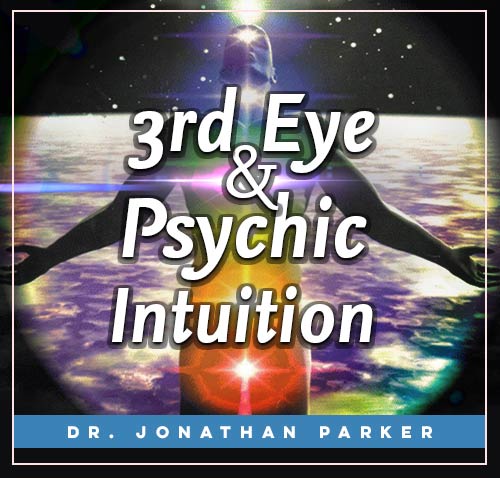Inner Sightings: Unveiling Remote Viewing Phenomenon

Before diving in, please note: This post is for informational purposes only. If you’d like to know more about how we approach topics, feel free to check out our friendly Disclaimer Page.
Hey there, amazing readers! 🖐️ Just a quick note: yes, we know there are a lot of ads here. Trust us, we get it—it’s not the prettiest look, but they help us keep this blog alive and kicking. Those pesky little ads cover the costs of all the behind-the-scenes magic, from hosting and tech stuff to creating content we hope you’ll love.
We’re committed to delivering quality posts, and your support (even just sticking around despite the ads) means everything to us. So, bear with us, and thanks for helping us keep the good vibes rolling. Now, on to the fun stuff! 😉
TRANSLATE BUTTON AT THE END OF THE ARTICLE
Introduction: Understanding Remote Viewing
Remote viewing is a fascinating phenomenon that has intrigued scientists, researchers, and the general public for decades.
It refers to the ability to gather information about a person, location, or event that is inaccessible through normal means of perception.
In simple terms, it is the ability to "see" things with the mind’s eye, regardless of distance or barriers.
What is Remote Viewing?
Remote viewing is often described as a form of extrasensory perception (ESP) or psychic ability.
It allows individuals to access information about distant or hidden targets using their mind.
Unlike clairvoyance or telepathy, remote viewing focuses specifically on gathering information about a specific target rather than communicating with other minds.
Historical Background of Remote Viewing
The origins of remote viewing can be traced back to ancient times, with examples of individuals claiming to have the ability to perceive distant or hidden information.
However, it was in the 20th century that remote viewing gained significant attention.
The United States government, particularly the Central Intelligence Agency (CIA), conducted extensive research on remote viewing during the Cold War era through a program known as Stargate.
The Science behind Remote Viewing
While remote viewing is often associated with paranormal or supernatural explanations, there have been attempts to study it scientifically.
Researchers have explored various theories, including the possibility of non-local consciousness, quantum entanglement, and subtle energies that connect individuals to their target.
However, despite numerous studies, the scientific community remains divided on the validity of remote viewing.
How Does Remote Viewing Work?
The exact mechanism of how remote viewing works remains a mystery.
However, proponents of remote viewing speculate that it operates through a combination of intuition, subconscious processing, and the ability to tap into a universal consciousness.
Remote viewers often describe their experiences as receiving impressions, images, or feelings about the target they are focusing on.
Notable Examples of Successful Remote Viewing
One of the most well-known examples of successful remote viewing is the case of Ingo Swann, a renowned remote viewer who worked with the US government’s Stargate program.
Swann accurately described details about a secret military base in Russia, including its location, layout, and activities.
This and other similar cases have intrigued researchers and sparked further interest in the phenomenon.
Another notable instance involved remote viewers assisting law enforcement agencies in locating missing persons.
In some cases, remote viewers were able to provide accurate information that led to the recovery of individuals who had been missing for extended periods.
Criticisms and Skepticism Surrounding Remote Viewing
Remote viewing has faced its fair share of criticism and skepticism.
Critics argue that the lack of replicable scientific evidence and the subjective nature of remote viewing experiences make it difficult to consider it a legitimate phenomenon.
Skeptics often attribute successful remote viewing to chance, coincidence, or the use of traditional investigative techniques.
Applications of Remote Viewing in Various Fields
Despite the skepticism, remote viewing has found applications in various fields.
In addition to its historical use by intelligence agencies, remote viewing has been employed in archaeological research, where it has helped locate hidden artifacts or lost civilizations.
It has also been used in medical settings to access information about a patient’s condition that may not be readily available through conventional means.
Training and Techniques for Remote Viewing
Remote viewing is a skill that can be developed through training and practice.
Various techniques have been employed to enhance remote viewing abilities, such as meditation, visualization exercises, and structured protocols.
These protocols often involve the use of coordinate-based systems, where the remote viewer is given a set of numbers that correspond to the target they need to focus on.
Ethical Considerations in Remote Viewing
As with any psychic or intuitive ability, ethical considerations play a significant role in remote viewing.
Remote viewers are often encouraged to use their skill responsibly and for the benefit of others.
Unlock your potential with the Advanced Intuition Training Course – start here.
Respecting privacy, obtaining consent, and ensuring confidentiality are crucial aspects of ethical remote viewing practice.
Additionally, remote viewers should be aware of the potential psychological and emotional challenges that may arise when exploring sensitive or distressing targets.
Current Research and Advancements in Remote Viewing
Despite the controversy surrounding remote viewing, there are ongoing efforts to study and advance the understanding of this phenomenon.
Some researchers are exploring the potential link between remote viewing and quantum physics, while others are investigating the role of consciousness in remote viewing.
Advancements in brain imaging technology may also shed light on the neurological processes involved in remote viewing experiences.
Conclusion: The Future of Remote Viewing
Remote viewing continues to captivate the imagination of both skeptics and believers.
While there remains no consensus within the scientific community regarding its validity, the wealth of anecdotal evidence and notable successes cannot be ignored.
Whether it is a genuine psychic ability or a form of enhanced intuition, remote viewing has the potential to contribute to various fields, including intelligence gathering, archaeology, and medicine.
Further research and exploration of remote viewing may unlock new insights into the nature of consciousness and our understanding of the world around us.

The Enlightenment Journey is a remarkable collection of writings authored by a distinguished group of experts in the fields of spirituality, new age, and esoteric knowledge.
This anthology features a diverse assembly of well-experienced authors who bring their profound insights and credible perspectives to the forefront.
Each contributor possesses a wealth of knowledge and wisdom, making them authorities in their respective domains.
Together, they offer readers a transformative journey into the realms of spiritual growth, self-discovery, and esoteric enlightenment.
The Enlightenment Journey is a testament to the collective expertise of these luminaries, providing readers with a rich tapestry of ideas and information to illuminate their spiritual path.
Our Diverse Expertise 🌟
While our primary focus is on spirituality and esotericism, we are equally passionate about exploring a wide range of other topics and niches 🌍📚. Our experienced team is dedicated to delivering high-quality, informative content across various subjects ✨.
To ensure we provide the most accurate and valuable insights, we collaborate with trusted experts in their respective domains 🧑🏫👩🏫. This allows us to offer well-rounded perspectives and knowledge to our readers.
Our blog originally focused on spirituality and metaphysics, but we’ve since expanded to cover a wide range of niches. Don’t worry—we continue to publish a lot of articles on spirituality! Frequently visit our blog to explore our diverse content and stay tuned for more insightful reads.







